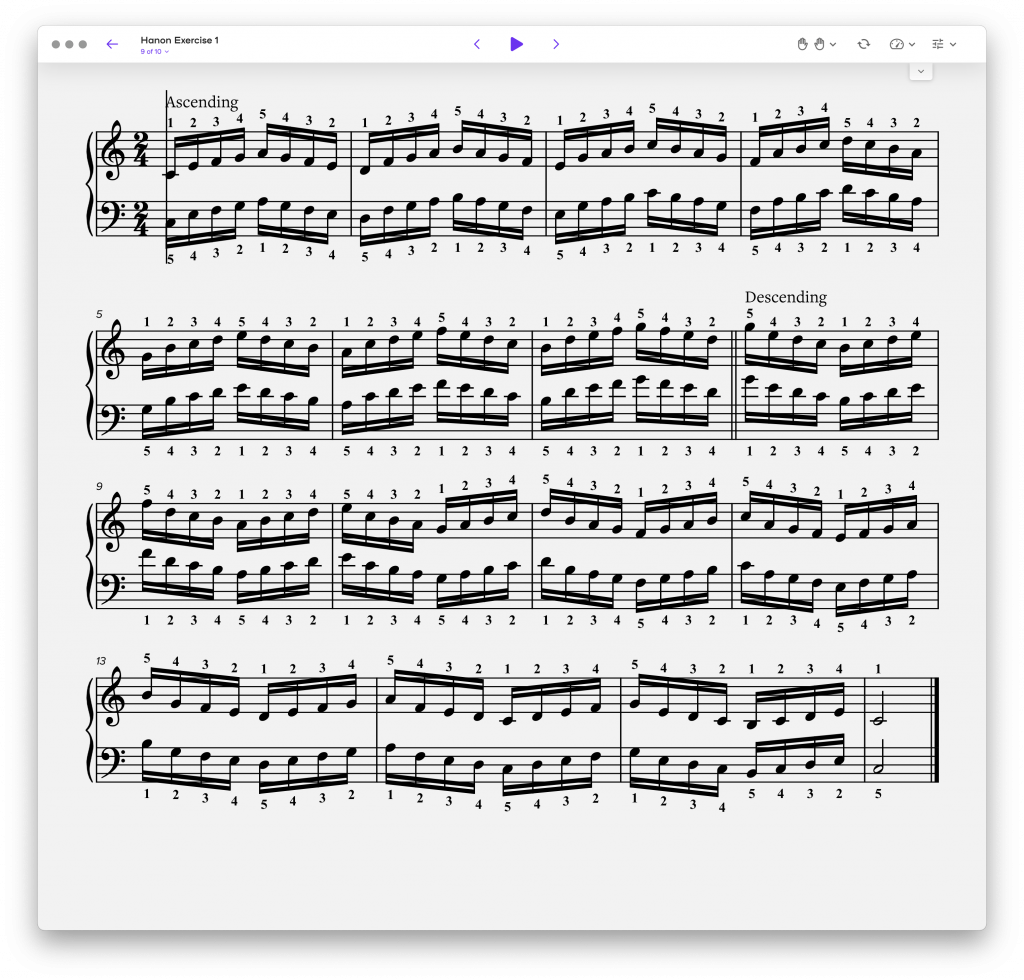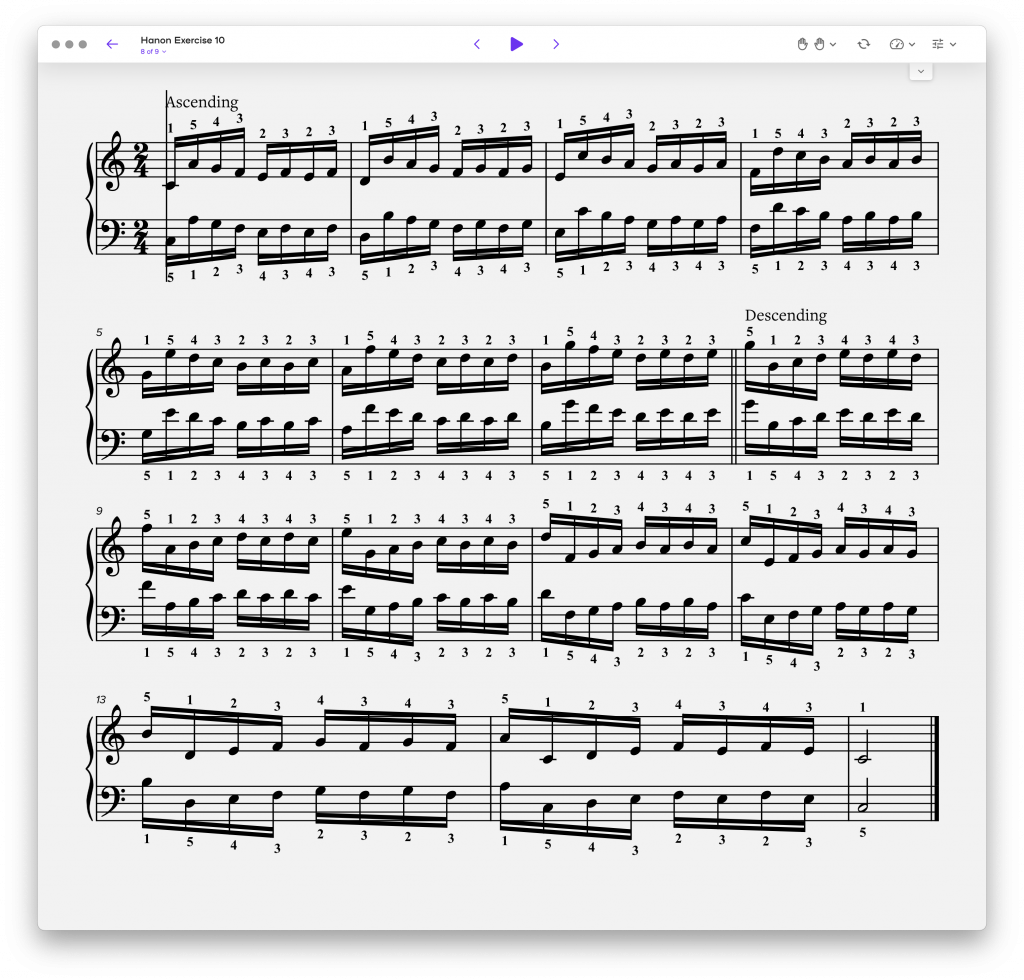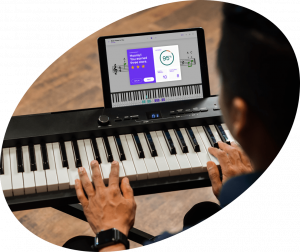The Hanon exercises are one of the most timeless and influential methods to develop good piano technique. The renowned Hanon exercises are considered the foundation to reaching piano mastery by many. If you’re serious about learning piano, and really want to play more challenging pieces on the piano, familiarizing yourself and ultimately practicing Hanon will go a long way in helping you reach your goals.
The history of Hanon’s piano exercises
Charles-Louis Hanon (1819–1900) was a French piano pedagogue (teacher) and composer. He is most famous for his work “The Virtuoso Pianist in 60 Exercises,” which is still widely used today for piano instruction. Charles Hanon’s book and exercises were designed to address the many technical challenges that pianists face. It quickly became a foundational tool in piano education, and is still the most famous of technique books and methods.
Hanon’s exercises are designed to improve the strength, agility, and independence of the fingers, as well as increase speed and precision in piano playing. The Hanon exercises provide a systematic framework for aspiring pianists to achieve proficiency in these critical areas. Each exercise was carefully crafted by Charles Hanon, clearly demonstrating his attention to detail and rigor, and thus effectively yielding significant results.
Why Hanon’s exercises are so popular
Why are the Hanon exercises so popular? Simple — they work! The popularity of Hanon’s exercises in piano education is a strong testament to their effectiveness.
They rapidly gained recognition as a fundamental component of piano pedagogy, maintaining their status as among the most celebrated technique books and methods. Embraced by music conservatories and private studios worldwide, Hanon exercises have become synonymous with traditional piano technique mastery. They continue to shape the skillsets of pianists from all over the world today.
The benefits of Hanon’s exercises
The Hanon exercises excel in isolating and developing fundamental aspects of piano technique. They target crucial skills, focusing on improving finger strength, independence, and agility. Piano students’ improvement in these areas leads to the formation of a solid technical foundation, enabling them to tackle complex compositions with greater ease.
Structure of the exercises
“The Virtuoso Pianist” is methodically structured, beginning step-by-step with simple exercises and gradually progressing to more complex patterns. Each exercise is designed to target specific technical aspects, and together, all of the exercises ensure comprehensive development in dexterity and control.
The Hanon exercises in the “The Virtuoso Pianist” are arranged in a specific order that gradually increases in difficulty. This systematic progression is designed to sequentially build the pianist’s technical skills.
Example of a Hanon exercise

The first exercise from Hanon’s “The Virtuoso Pianist” focuses on finger independence and strength.
- The pattern starts on C with the right hand, using a five-finger ascending and descending motion (C-E-F-G-A, then back down A-G-F-E-D).
- The key is to play each note with equal force and maintain a steady tempo.
- The same pattern is then repeated up the keyboard, each time starting on the next white note(D-F-G-A-B, then back down B-A-G-F-E), and using the same fingering.
- The left hand performs the same pattern, starting on C and ascending then descending (C-E-F-G-A, then back down A-G-F-E-D).

Lesson #10 from Hanon’s “The Virtuoso Pianist” provides another good example of what you get with the Hanon exercises. This exercise focuses on developing finger independence, agility, and control utilizing a new pattern. Here’s a brief overview of what this exercise entails:
- The exercise involves playing a series of ascending and descending patterns that require crossing of the fingers and quick shifts in hand position.
- The right hand starts with a pattern that ascends the keyboard, using a combination of finger crossings and stretches.
- The left hand performs the same pattern and also moves ascending.
- Playing both hands together helps reinforce finger independence.
Tips for practicing Hanon exercises
- Start Slowly: Begin at a slow tempo that allows you to play each note evenly and with precision. Speed is not the initial goal; control and evenness are.
- Focus on Finger Strength and Independence: Make sure each finger is playing its note cleanly and with equal strength. Avoid letting stronger fingers dominate the weaker ones.
- Use Correct Fingering: Hanon exercises are designed with specific fingerings to maximize their technical benefits. Stick to these fingerings even if they feel awkward at first.
- Gradually Increase Speed: As you become more comfortable with an exercise, gradually increase the tempo. However, only do so as long as you can maintain accuracy and evenness.
- Stay Relaxed: Tension is the enemy of good piano technique. Keep your wrists flexible, your arms relaxed, and your fingers curved.
- Consistency is Key: Regular practice of these exercises is crucial for seeing improvement. Even a few minutes a day can make a significant difference.
Ready to try Hanon exercises for yourself?
Hanon’s exercises have been a cornerstone in piano technique for nearly 150 years. Our Hanon course at Playground Sessions is an excellent way to access these time-tested exercises. Whether you’re a teacher, a student, or a performer, these exercises can elevate your piano playing. Dive in, practice regularly, and most importantly, have fun on your musical journey!
To further explore Hanon’s exercises and learn more about practicing them effectively, you might find the following resources helpful:
- Hanon Online: This website provides an extensive range of Hanon exercises, including all 60 exercises from “The Virtuoso Pianist.” It’s a great resource for anyone looking to delve deeper into Hanon’s methodology and practice techniques.
- Hoffman Academy Blog: The Hoffman Academy blog offers a comprehensive overview of Hanon exercises, detailing their benefits and providing tips on how to incorporate them into daily practice. This resource is particularly useful for understanding the structured progression of the exercises and their impact on developing piano technique.
Playground Sessions also has a video-led course that walks you through the first 20 exercises, the most popular ones. Below are a few videos to help you see how they look and sound in practice.
Lesson 1 from Hanon’s “The Virtuoso Pianist”
Lesson 10 from Hanon’s “The Virtuoso Pianist”
Lesson 20 from Hanon’s “The Virtuoso Pianist”
Want to learn Hanon and more at your own pace? Check out the Playground Sessions app.

